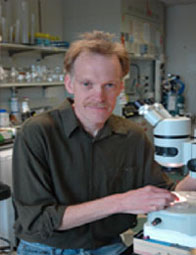| |
On May 20, 2000, 29-year-old Anna Bagenholm was out skiing with some friends. She slipped and fell beneath a waterfall and got stuck there. With cold water pouring over her, Dr. Bagenholm’s body temperature slowly dropped from the normal 37°C to a frigid 13.6°. She went nine hours before she was able to maintain a heartbeat. When Dr. Bagenholm arrived at the hospital, she was clinically dead. Yet somehow she managed to survive.
Suspended animation has been a staple of fiction and films for a very long time – in the Sleeping Beauty folk tale, and in Washington Irving’s famous 1819 story Rip Van Winkle, where Rip sleeps for 40 years. John Spartan is cryogenically suspended from 1996 to “well into the 21st century” in Sylvester Stallone’s film Demolition Man. In Woody Allen’s film Sleeper (perhaps loosely based on the H.G. Wells 1899 novel, When the Sleeper Wakes) Miles Monroe is suspended for 200 years, and then re-animated in order to help overcome an oppressive government. And lots of space stories and movies have intergalactic travelers in suspended animation for the duration of their lengthy voyages.
To Dr. Mark Roth of the The Fred Hutchinson Cancer Research Center, Anna Bagenholm’s story provides evidence that it is possible for humans to remain in suspended animation for prolonged periods of time.
“We already know that it is possible in some cells,” said Dr. Roth. He cites oocytes, cells that remain alive in a woman’s body from the time she reaches sexual maturity. There are around 100,000 oocytes prepared to ovulate, but only one of them actually ovulates each month. The rest wait for their turn, in a state of suspended animation. “For all intents and purposes,” said Dr. Roth, “these cells are immortal. We are looking at this quality of immortality: to suspend.” Dr. Roth and his team were interested in what caused suspended animation. They reasoned it was caused by specific chemicals in the blood that block the cell’s ability to use oxygen.
How much oxygen do we need?
Room air has around 21% oxygen. If the oxygen concentration were reduced to 5%, a person could survive for ten minutes before dying of suffocation. However, if that a person were given a chemical that induced suspended animation before being exposed to low oxygen levels, he or she might be able to survive for a longer period of time.
Toxic in Large Doses and Beneficial in Small Doses
Dr. Roth and his team set out to see if they could find the chemical(s) that induced suspended animation. They looked at chemicals such as carbon monoxide, rat poison, and hydrogen sulfide, all of which are known for their toxicity because they stop cells from using oxygen. “It is often the case that something toxic in large doses may be beneficial in small amounts,” remarked Dr. Roth.
From occupational safety research, toxic and lethal levels of hydrogen sulfide had been defined in mice. Dr. Roth used this as a starting point and began testing non-lethal doses of hydrogen sulfide on mice to see if it could induce a reversible state of suspended animation.
The researchers began by exposing mice to atmospheres containing large, but not lethal, amounts of hydrogen sulfide. They measured the amount of carbon dioxide the animals breathed out as an indicator of their metabolic rate, and their body temperature. After five minutes, the mice had reduced metabolic rates. Over several hours in this hydrogen sulfide environment, the animals’ decreased their breathing rate from 120 breaths/minute to about 10 breaths/minute and stopped moving. In addition, their body temperature dropped from
37°C to about 13°C. Upon removal of the hydrogen sulfide, their core temperature
returned to
37°C with no apparent adverse effects in the animals.
Dr. Roth had basically converted the mice from warm-blooded animals to cold-blooded animals. “Similar changes are commonly observed in hibernating animals,” remarked Dr. Roth.
The mice were kept in this condition for six hours. When they were revived, they were tested to see if suspended animation had any effects on their behavior or their brain function. It did not, and all the mice were perfectly normal.
Mice are not the only animals able to obtain a state of suspended animation. Dr. Roth and his team produced similar states in yeast, zebrafish embryos, and worms.
Dr. Roth believes that the state of suspended animation protects organisms and animals from environmental conditions that would normally kill them, such as long periods of little or no oxygen. Decreasing the amount of oxygen to the tissues induces suspended animation in many animals.
Dr. Roth reasoned that humans might also respond to reduced oxygen in the same way. If this is true, and it is just beginning to be studied in humans, suspended animation could be used to preserve organs that are being donated for longer periods of time or to protect humans from damage due to lack of oxygen.
There are other possibilities as well. For example, cancer cells are treated with radiation. But unfortunately, the healthy nearby cells are often damaged. If their oxygen consumption could be reduced temporarily, nearby healthy cells might survive radiation therapy better, resulting in fewer bad side effects for the patient.
Astronauts on future very long space voyages could also go into a state of suspended animation, so that less oxygen and food would have to be sent on the with them on their journeys. This would save room and fuel on the space vehicle.
Heart attack victims might benefit by being exposed to hydrogen sulfide and having their metabolisms lowered: the benefit would be reduced tissue damage to the heart. And with stroke and other traumas, the ability to slow down the body’s normal response could preserve organs and tissues and might even save lives.
Why hydrogen sulfide?
Hydrogen sulfide is a chemical that is naturally produced by our bodies. Dr. Roth suggests it may be one chemical involved in regulating how much energy our cells use, a process called cellular energy metabolism. Hydrogen sulfide is also used by many forms of life, from unicellular organisms to mammals. It may even have been the original pathway used by organisms to generate energy. Some organisms alive today still use this process, including sulfur-oxidizing bacteria that inhabit caves on land or deep-sea caves.
Dr. Mark Roth is a Principal Investigator in the Division of Basic Sciences at the Fred Hutchinson Cancer Research Center in Seattle, Washington. He received his B.S. from the University of Oregon and his Ph.D. from the University of Colorado at Boulder, Colorado. Dr. Roth describes research as a sandbox for adults, where he can pursue ideas that just pop into his head. He has always been interested in how things work.
|
|

Dr. Mark B. Roth

Some members of Dr. Roth's laboratory at The Fred Hutchinson Cancer Research Center. From left to right: Jennifer Blackwood, Mark Budde, Kin Chan, Summer Lockett, Dana Miller, Mike Morrison. [enlarge]

The title character awakens to discover a changed world in the Washington Irving story Rip Van Winkle. (Illustration by Arthur Rackham.)
Sign Up for our Monthly Announcement!
...or  subscribe to all of our stories! subscribe to all of our stories!

What A Year! is a project of the Massachusetts
Society for Medical Research.
|
|

